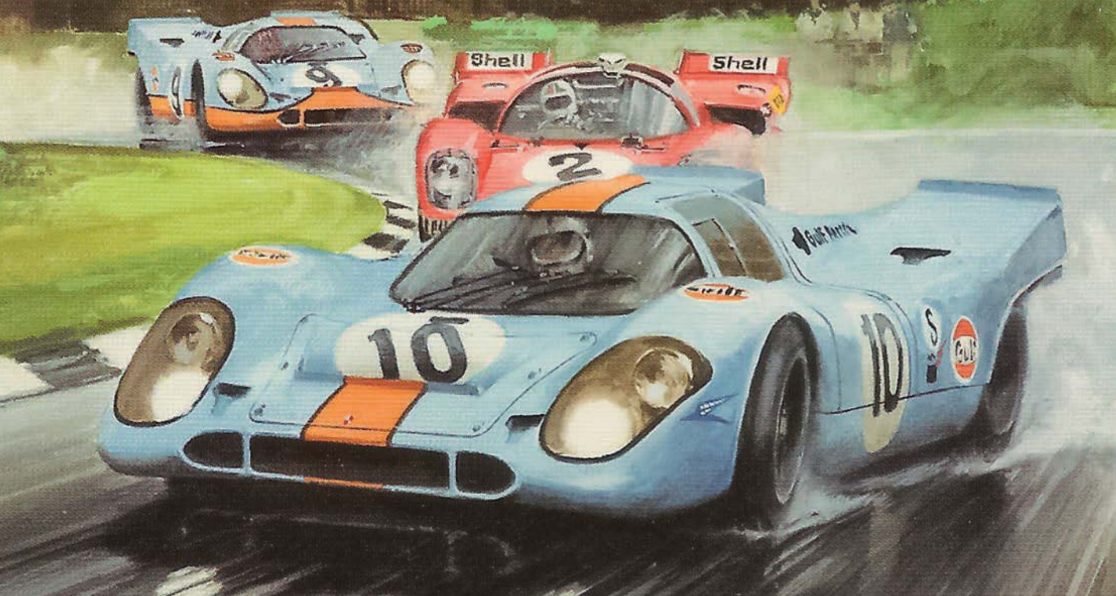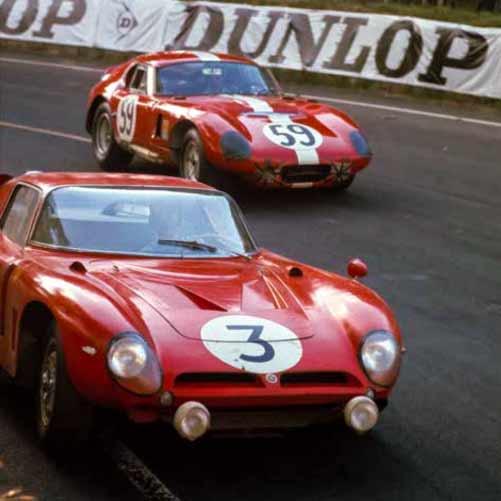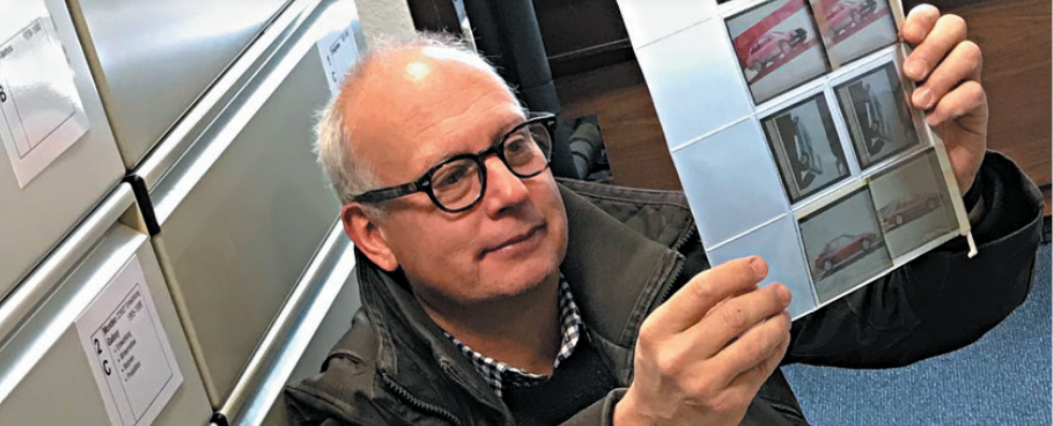
How the fearsome Porsche 917 progressed from tragedy to triumph

With huge power, light weight, and magnificently slippery bodywork, Porsche’s 917 was feared equally by those who raced against it and those who had to drive it. The 917 became the first car to reach - and greatly exceed - 200mph on Le Mans’ Mulsanne Straight, but at a time when racing car aerodynamics were mostly shaped by faith, this proved perilous. When the 917 really got going, its downforce went too. The horror stories of high-speed waywardness are now so legendary they are at risk of being dismissed as exaggerated myth, so the best way to conduct a reality-check is to hear what the drivers said. . .

Le Mans winner Richard Attwood remembers, with absolute clarity, “It was a horrendous car. Hugely fast, but floating all over the road. Aerodynamically, it was unbelievably unstable.”
Hans Herrmann, who raced for Mercedes-Benz in Grands Prix and the Mille Miglia before switching to Porsche, agreed: “The car was a catastrophe. The motor was too strong and the chassis had problems. We did not drive the car; the car drove us!”
“The thing weaved all over the shop” according to Aussie Frank Gardner, who was drafted to drive a 917 with David Piper at the Nürburgring in 1969 after Porsche’s regular drivers all opted to stick with the smaller and nimbler 908. The following year, Piper had to have his right leg amputated below the knee after crashing a 917 during filming for the movie Le Mans.
On the same fast stretch of track where Piper had his accident, going from Arnage into Maison Blanche, John Woolfe had lost control of his 917 on the opening lap of the 1969 race with fatal consequences. Earlier that week, as Woolfe’s team-mate Digby Martland hammered down the Mulsanne, the 917 whipped into a spin. Miraculously, car and driver escaped unscathed, but Martland made his way gingerly back to the pits, climbed out of the Porsche, and retired from racing on the spot.
Other drivers think Martland’s close-shave was precipitated by throttle-lift or turn-in, or a combination of both, approaching the Mulsanne Kink. The slightest interference with the 917’s equilibrium at high speed could break its tentative grip. This is why, Vic Elford said, “everything had to be done gently.”
If anyone knew how to peddle a 917, it was Quick Vic. In the 917’s debut season, 1969, the Elford/Attwood 917 led Le Mans after 21 hours by a clear six laps. Unfortunately, the gearbox started to crack and leak oil onto the clutch, forcing the car to halt, but there was no mistaking its pace.

By 1970, Porsche had made the 917’s high-speed roadholding more manageable and increased displacement of its air-cooled flat-twelve from 4.5- to 4.9-litres. The car Elford usually raced that season, chassis number 023, still had the smaller engine, and for Le Mans he asked to be switched to another example with the bigger powerplant – and this proved to be his career’s biggest mistake.
Taking an opposite view to Elford, Attwood liked the idea of racing 023 at Le Mans. He believed that, over the course of 24 hours, its smaller engine could be more reliable. For the same reason, Attwood asked to be teamed-up with 42-year-old Herrmann, not the quickest of Porsche’s drivers, but gentle on machinery. After qualifying, however, Attwood thought he had blundered with this cautious approach. In a race featuring seven 917s and 11 Ferrari 512s, 023 was way down the grid. “We were losing six to eight seconds per lap,” said Attwood, “purely [under acceleration] out of the Mulsanne and Arnage corners. I was so depressed going into that race, because I knew that we just didn’t have a chance.”
Attwood and Herrmann decided their only hope was to be the tortoise in a race full of hares. During the opening laps, says Attwood, the race “was the nearest thing to a Grand Prix. For a 24-hour race it was quite silly. Everybody wanted to be at the front.” Except, that is, for Attwood and Herrmann. Their strategy was to take good care of 023 during the first six hours and see how the race would shake-out. This, said Herrmann, meant “no fighting other competitors.”
Their plan gradually began to make sense. In a race ravaged by periods of torrential rain, one-by-one the pace-setters crashed out or pushed their machines to breaking-point. By midnight, only two cars were ahead of 023, the Jo Siffert/Brian Redman 917 and the Jacky Ickx/Peter Schetty 512. Then, in the early hours of Sunday morning, Ickx crashed heavily at the Ford Chicane and Siffert broke the Porsche’s engine by missing a gearshift. Track conditions remained tricky, with rain falling intermittently until noon, but the tortoise stayed far enough ahead of the limping hares to win the race.
This was a historic victory, Porsche’s first in the world’s most famous endurance race. A 917 would win Le Mans again in 1971, setting the German marque on the road to five wins there in the ’70s, seven in the ’80s, and 19 to date.
 For these reasons, 917 chassis number 023 is one of the most important of all Porsche racing cars. It is also the subject of a Porter Press book, Porsche 917 – The autobiography of 917-023, written in engaging style by Ian Wagstaff. For fans of Porsche, sports racing cars, or Le Mans, this 320-page tome, beautifully produced and containing more than 300 photographs, is a must-have – a compelling insight into Le Mans 1970, the six other long-distance races contested by 023 that year, and the origination and development of the Type 917. It’s a horror story with a happy ending.
For these reasons, 917 chassis number 023 is one of the most important of all Porsche racing cars. It is also the subject of a Porter Press book, Porsche 917 – The autobiography of 917-023, written in engaging style by Ian Wagstaff. For fans of Porsche, sports racing cars, or Le Mans, this 320-page tome, beautifully produced and containing more than 300 photographs, is a must-have – a compelling insight into Le Mans 1970, the six other long-distance races contested by 023 that year, and the origination and development of the Type 917. It’s a horror story with a happy ending.
By Phillip Bingham






1 comment
The article mentions that Vic Elford knew how to ‘peddle’ a 917.
Are you saying he was a salesman not a racing driver?
Mark Baker
Leave a comment
This site is protected by hCaptcha and the hCaptcha Privacy Policy and Terms of Service apply.